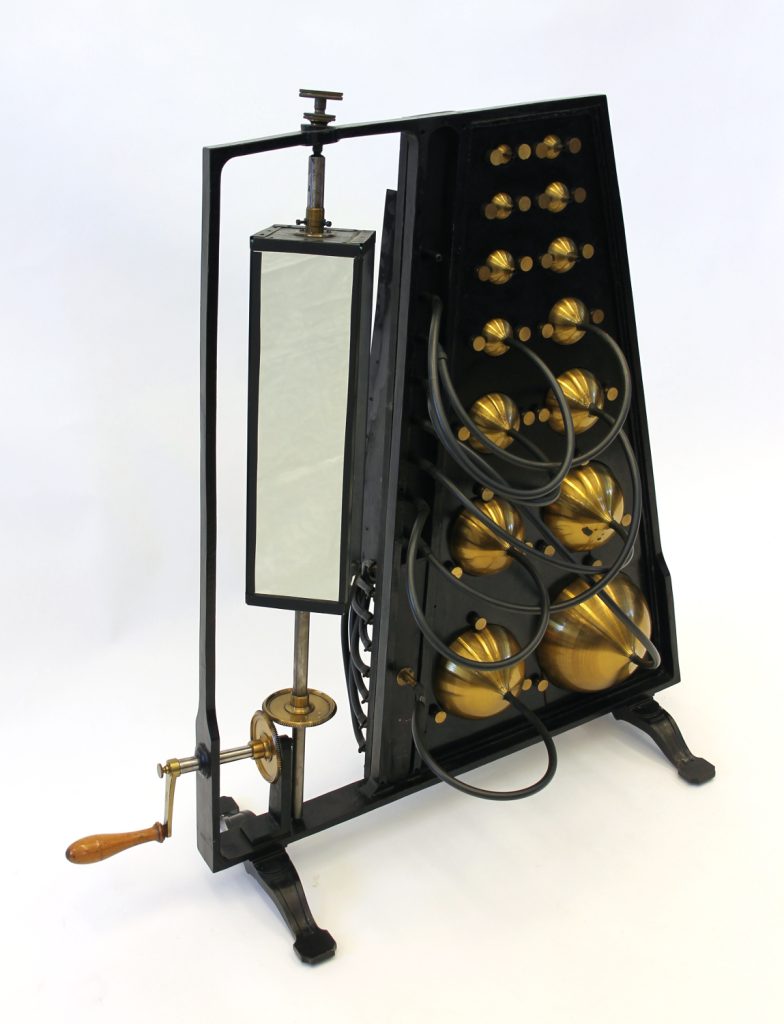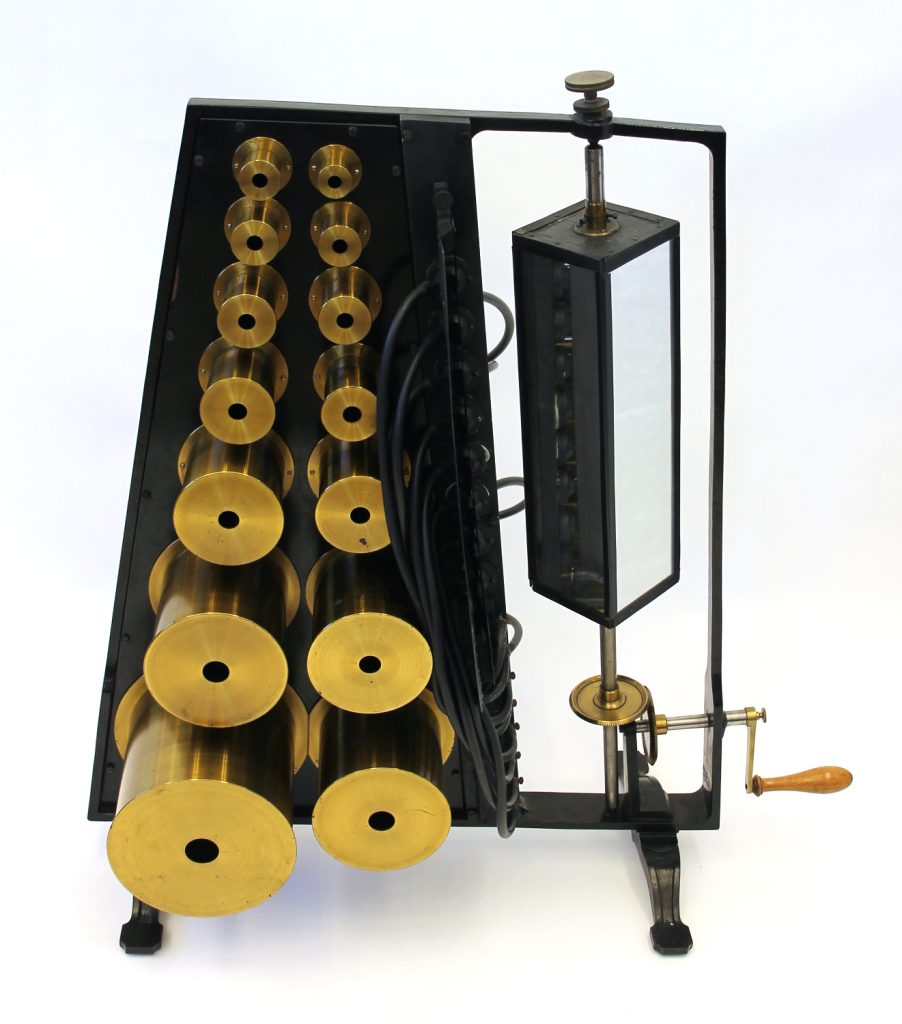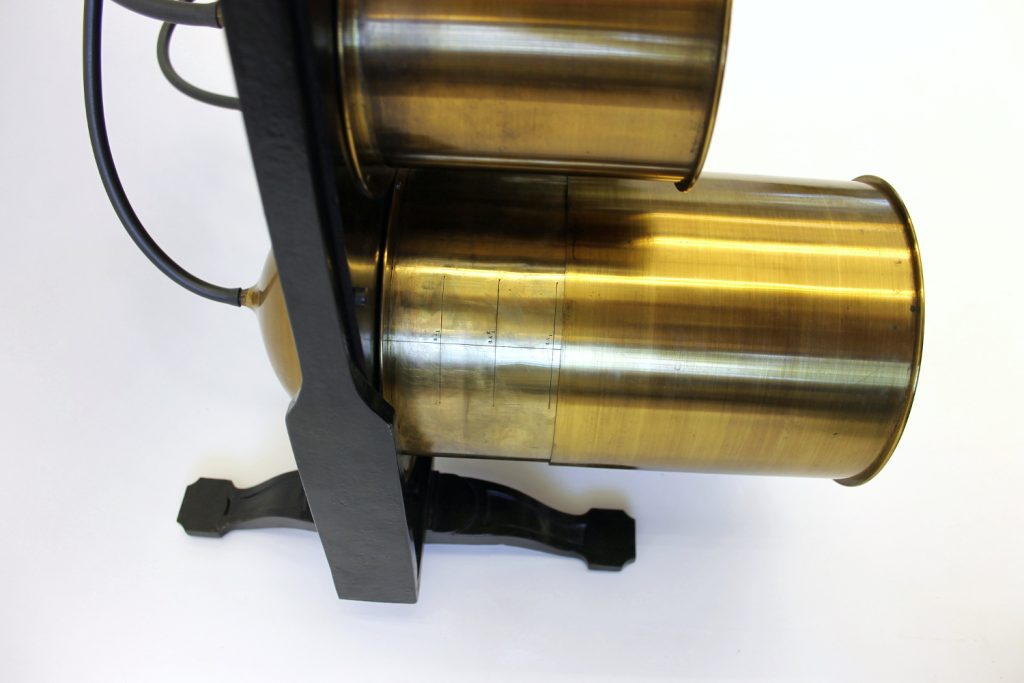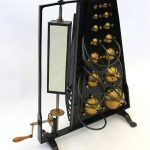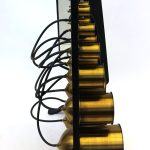Artefacts
Koenig Analyser
Koenig Analyser
(Accession Number: 2015.ph.710)
Dimensions: Height = 92, Length = 85,Width = 35
Condition: Very Good. The instrument has been modified for modern demonstration purposes.
Description: 14 universal resonators supported by a cast iron frame. The resonators can be adjusted by sliding them outward, range from UT2 (base C) to UT5 and can be connected to 8 manometric capsules, each supplied with gas (connection on back), through 8 input lines,originating from a single gas source in the back. A crank rotates the mirror that displays the flame signals that are emitted from the vertical row of gas burners which protrude from the capsules. This instrument was used to visually analyse the constituents of a compound note. Activated resonators cause visible fluctuations in the jet flames which, in turn, are magnified by the Wheatstone mirror. This is a modification of an earlier model cat. No. 242a that was limited to analysing base C and its harmonics. This analyser uses universal resonators (with adjustable volumes) making it sensitive to a wide range of notes.
Alternate name: Flame analyser
Function: The flame analyser was developed by Rudolph Koenig to create a visible display of individual frequencies within complex sounds. A series of resonators were made to actuate gas flames through the movement of a light membrane used to transmit sound waves from the resonator to the gas flow. The dancing flame produced by a activated resonator would be perceived as contiguous line showing the frequency of vibration when viewed in the rotating mirror incorporated in the instrument.
Historical Notes: Koenig‘s flame analyser was, next to the sound synthesizer, one of the clearest expressions of Hermann von Helmholtz’s theory that complex sounds were made up of a spectrum of elemental or pure tones. The adjustable resonators covering a range of 65 notes from sol1 to mi5 (96-1280 Hz), could each be rendered visible with a connection to a manometric flame capsule. The resonators connected to a gas-filled capsule with a rubber tube. If activated, the distinctive pattern would appear in the rotating mirror. A human voice, for example, would activate a series of capsules revealing its rich harmonic structure. A tuning fork, representing a pure, elemental tone, would only activate one resonator and capsule. Koenig invented this analyser for his vowel studies between 1865 and 1872. It was flexible with a wide range compared to the earlier model with eight fixed resonators (CR no. 242a). [Pantalony 2009, 322]
© 2015 – 2024 Humboldt-Universität zu Berlin

